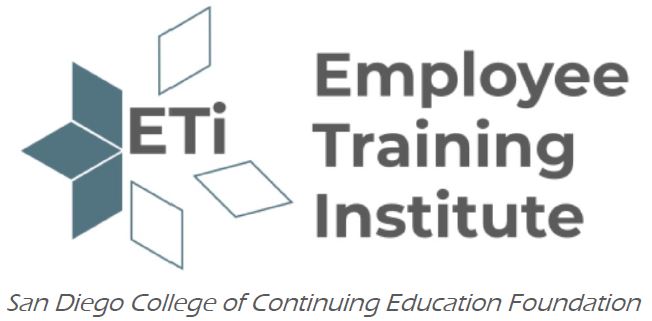Medical Coding and Billing Training
Through online medical coding and billing training, you can take the next steps toward a career you enjoy – all on your schedule, from home! With an expected 7% increase in new medical coding and billing jobs over the next 10 years*, it’s a great time to start learning the skills that can help you prepare for on-the-job success!
Registration and Enrollment
This course is 100% online. Start anytime!
Program Details
Program Overview
Designed to help you prepare for CPC certification, our skills-focused program covers the skills and knowledge that employers look for in medical coding and billing professionals or Certified Professional Coders. Throughout your online courses, you’ll cover fundamental topics from medical terminology to professional coding.
You’ll also get a crash course in career-readiness and hands-on experience with actual medical records.
What You’ll Learn
Designed using feedback from health systems across the country, we work hard to keep our medical billing and coding program relevant and fully aligned with industry needs.
- Foundations in HIM
Gain a thorough understanding of health information management (HIM), how medical coding fits into healthcare, and various reimbursement methods.
- Biomedical Sciences
Learn the medical terminology, anatomy, and physiology needed to correctly assign billing codes to patient procedures and diagnoses.
- Medical Record Coding
Learn the current medical code sets and get hands-on experience with 3M encoding software as you practice with actual medical records.
- Program Orientation: Medical Coding and Billing Professional
- Introduction to Healthcare
- Digital Technology
- Comprehensive Medical Terminology
- Law, Liability, and Ethics for Healthcare
- Anatomy and Physiology Essentials
- Health Information Management
- Comprehensive Electronic Health Records
- Outpatient Coding
- Medical Billing
- Program Completion: Medical Coding and Billing Professional
Our online medical coding and billing courses are designed to be completed in as little as 12 months.
Have other obligations and need to train on your own schedule? No worries. Our program is fully online and built for flexibility. With 12 months of full access, you can set your own schedule and complete your coursework on a timeline that fits your lifestyle.
- 12 months of full access
- 11 individual courses
Our online Medical Coding and Billing Training is designed to fit your busy life. With courses 100% online, you can study wherever and whenever you want!
You’ll have up to 12 months to complete all of your courses and can study as little or as much as you’d like each day. At the end of your program, you’ll also take the next steps to prepare for your CPC exam, including taking the AAPC Practicode course.
- Learn from home (or anywhere)
- Study online (anytime)
Even though you’re learning independently online, you’re not alone! Real people—dedicated trainers, technical support team, and Career Advisors—are all committed to your success, from pre sign-up to post completion. And, as part of the cost of your program, you’ll also receive an AAPC membership which can help you connect and learn from peers in the field.
- One-on-one support
- Phone, live chat, and email
- AAPC membership included
Your online Medical Coding and Billing Program helps you prepare to sit for the Certified Professional Coder (CPC) exam, the most recognized coding credential, so you can show employers you have the skills they’re looking for.
- Certified Professional Coder (CPC®)
- The gold standard and most recognized medical coding credential – certified by the American Academy of Professional Coders (AAPC).
This program includes unparalleled training, career support, and coaching. It’s a faster, cheaper alternative to traditional schooling.
- $3,699.00 for full program access
Job Outlook
The Bureau of Labor Statistics estimates 7% employment growth over the next 10 years.* That’s a significant number of professionals needed in the field to code patients’ records; act as liaisons between healthcare facilities, insurance companies, and other establishments; and manage the responsibilities associated with electronic health records.
*Bureau of Labor Statistics, U.S. Department of Labor. “Medical Records and Health Information Technicians.” Occupational Outlook Handbook. Accessed March 10, 2023.
Statements found in the United States Department of Labor Occupational Outlook Handbook are not a guarantee of any post-graduation salary, in part because the data used to create the Occupational Outlook Handbook includes workers from differing educational backgrounds, levels of experience, and geographic areas of the country.
FAQs
What is medical coding and billing?
Medical coding and billing is the process of translating information from patient records—treatments, tests, and procedures—into the standardized codes used to bill patients and third-party payers such as insurance companies, Medicare, and Medicaid.
What will I do every day?
You’ll play a vital role in the healthcare ecosystem, helping to ensure that third-party payers are billed correctly so healthcare providers can get reimbursed. You’ll review and manage patients’ electronic medical records and assign codes to diagnoses and procedures that have been performed. And you’ll be the liaison between healthcare facilities and billing offices.
How much do medical billing and coding jobs pay?
The salary for a medical coding and billing professional will vary by employer, location, and experience. But the median salary is $46,660 with potential for traditional employment benefits.*
* Bureau of Labor Statistics, U.S. Department of Labor. “Medical Records and Health Information Technicians.” Occupational Outlook Handbook. Accessed May 15, 2023.
Statements found in the United States Department of Labor Occupational Outlook Handbook are not a guarantee of any post-graduation salary, in part because the data used to create the Occupational Outlook Handbook includes workers from differing educational backgrounds, levels of experience, and geographic areas of the country.
What is the job outlook for medical billing and coding?
Medical billing and coding jobs are plentiful. In fact, there’s a nationwide shortage of people with this critical skill set. The Bureau of Labor Statistics estimates 7% employment growth in 10 years.*
Do I have to be certified to work in medical coding and billing?
While certification isn’t mandatory, most employers prefer their employees to be certified. Especially in the highly regulated and privacy-driven field of healthcare. Certification may improve your employment opportunities and earning potential. Our medical billing and coding training prepares you for the Certified Professional Coder (CPC) exam and includes the cost of the exam and the AAPC Practicode course so you can fast-track past the apprenticeship level into full CPC status!
What is Apprentice status?
After passing the AAPC Certified Professional Coder (CPC) certification exam, most medical biller and coders will remain credentialed at the “apprentice” level until they have fulfilled a 2-year work experience requirement. To help you get trained, get hired, and get ahead in your new career as a certified professional coder we will cover the cost of the AAPC Practicode course as part of your program. Successful completion of the CareerStep Medical Coding and Billing Professional program and the AAPC Practicode course meets the work experience requirement allowing you to obtain the full CPC certification credential when you pass the AAPC Certified Professional Coder (CPC) certification exam.
Wondering how to start a career in medical billing and coding?
To take the first steps toward starting a medical billing and coding career, you need to be at least 18 years of age and have a high school diploma or General Education Development Certificate (GED). Optionally, you can pass the CareerStep Pre-Training Assessment Test. Then sign up for our medical coding and billing program. Complete your course, take the certification exam, and use our career services to help land that first job!
How do medical coding and billing certificate programs and associate degrees compare?
Great question! The entry-level requirement for medical coding and billing is post-secondary training of some kind. So you can go to a community college or to CareerStep. We think the choice is obvious.
Associate Degrees usually require you to take lots of unrelated courses (in subjects like writing, math, or other general (and irrelevant) fields. Typical associate degrees take two years and cost significantly more in tuition than certificate training.
Certification Programs focus solely on career training for a specific professional or technical field. So it comes with much lower time commitment and cost. This streamlined approach is also the fastest path to a new and improved job and salary.
“When a physical textbook was needed, I was able to “rent” one for free. This was a fantastic option! I have been very pleased with the prompt responses when I’ve had a question about ANYTHING! The student advocates are amazing and helpful. When doing the online course for Professional Medical Billing and Coding, I got a little behind and needed extra time. They were so helpful to suggest leaving a review for and additional month access.”
Anita Oliver, USA
* Bureau of Labor Statistics, U.S. Department of Labor. “Medical Records and Health Information Technicians.” Occupational Outlook Handbook. Accessed May 15, 2023.
Statements found in the United States Department of Labor Occupational Outlook Handbook are not a guarantee of any post-graduation salary, in part because the data used to create the Occupational Outlook Handbook includes workers from differing educational backgrounds, levels of experience, and geographic areas of the country.

